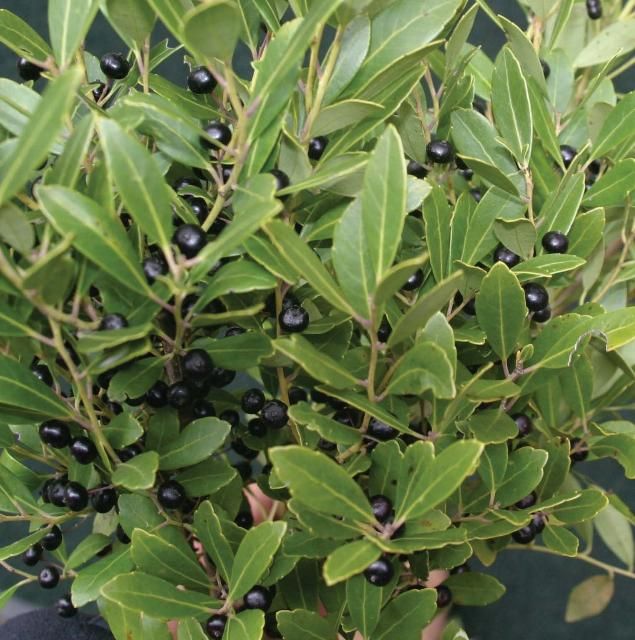Inkberry, Ilex glabra
Note: This fact sheet is also available as a chapter in a comprehensive manual titled Dune Restoration and Enhancement for the Florida Panhandle, available in pdf form here: https://edis.ifas.ufl.edu/pdffiles/SG/SG15600.pdf. Please see the manual for more information about other useful and attractive native plants for dunes and for further information about restoration and preservation techniques.
Aquifoliaceae

Credit: Mack Thetford, UF/IFAS
Inkberry is found throughout Florida and more broadly west to Texas and northeast to the Canadian border. Fruits attract birds and other wildlife but are not edible to humans. Flowers attract pollinators, including honey bees. Plant male and female plants in order to sustain fruit production.
General Description
Inkberry is a colonial, evergreen shrub that can reach heights of 3 to 6 ft. Leaves are alternate and simple, growing from 0.75 to 3 in long. They have dark green upper surfaces and powdery pubescent petioles. Leaf margins are entire or they may have up to 6 rounded serrations or notches toward the apices and the apices will have a tiny point. Inflorescences are borne in the leaf axils and appear in spring. They are clusters of white flowers that grow 5 to 8 mm in diameter. The species is dioecious with pistillate and staminate flowers occurring on separate plants. Fruits contain 5 to 8 nutlets. They are shiny black spherical drupes 5 to 8 mm in diameter. Fruits often persist through winter.
Propagation
The authors have had much success producing inkberry from seed of wild-collected fruits. Fruit can be harvested in January and cleaned seed sown in open flats or in 72-cell flats after moist, cool stratification (40 days at 4.5°C) to overcome seed dormancy associated with immature embryos. Germination may occur over an extended period; seedlings are grown for 4 months before they are transplanted to larger pots.
Outplanting
Plants grown in 3-gal treepots with ½-inch screened composted pinebark had 2 to 6 times greater outplanting survival and were 1.5 times larger after 15 months than plants grown in 1-gal pots (Thetford et al. 2005). Outplanting should be done with protection of a foredune ridge above a meter or at least 466 ft from the Gulf mean high tide line.
Literature Cited
Thetford, M., D. Miller, K. Smith, and M. Schneider. 2005. "Container size and planting zone influence on transplant survival and growth of two coastal plants." HortTechnology 15(3):554–549.


